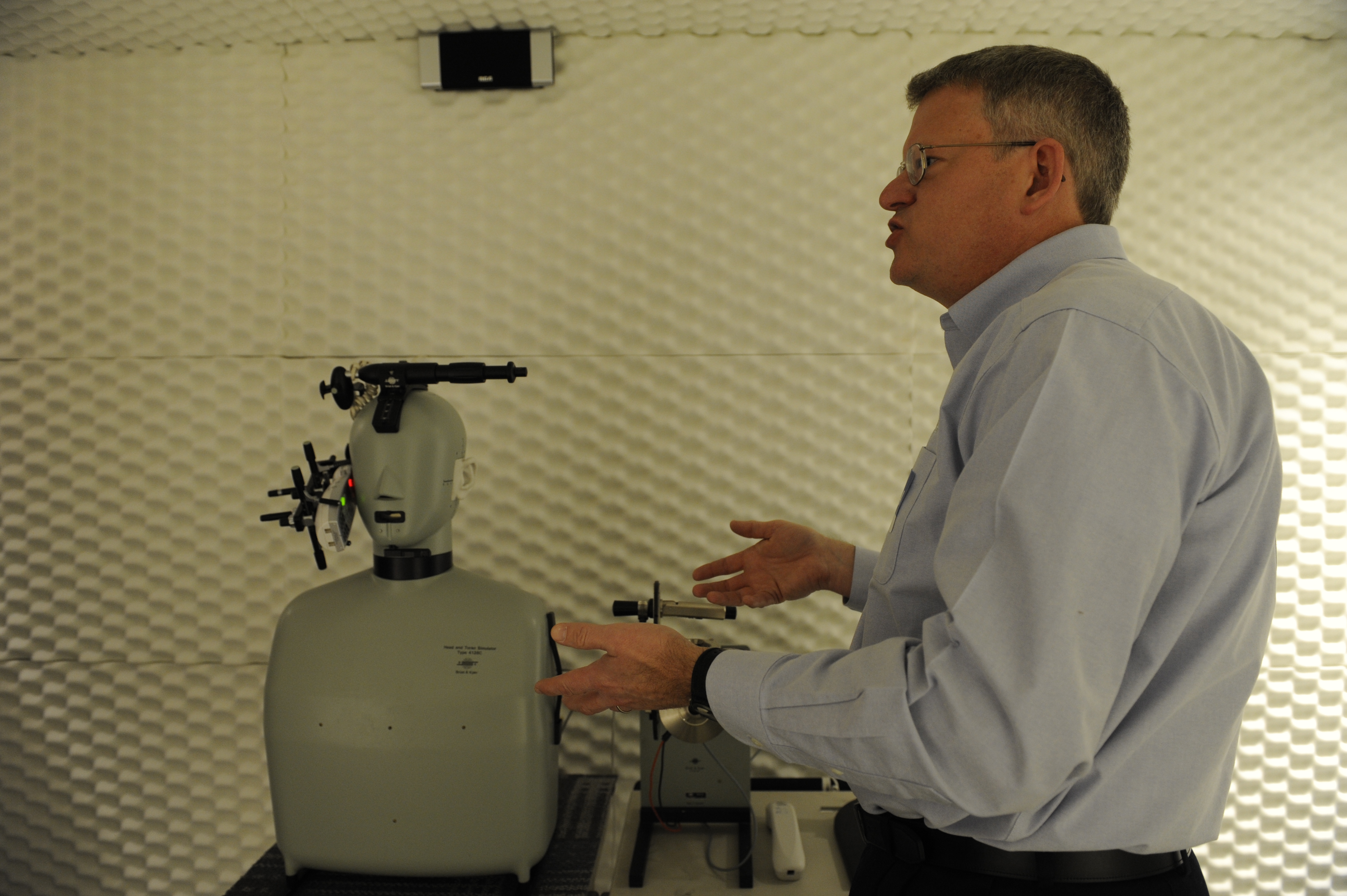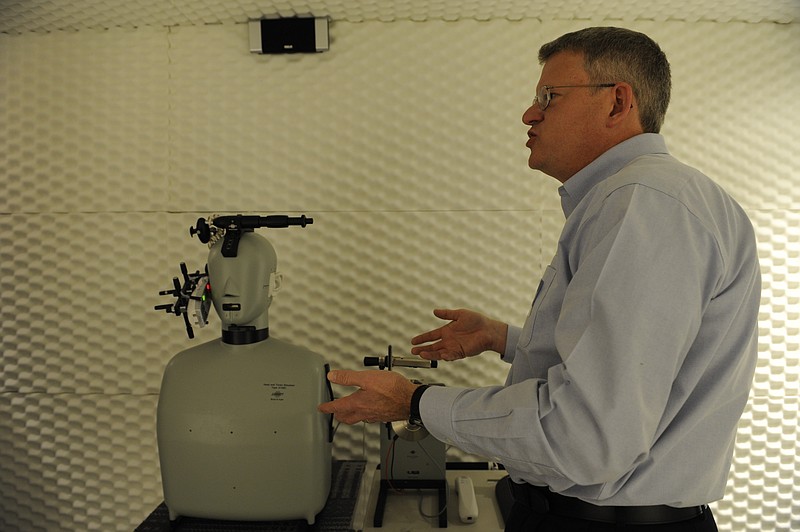 David Lashley, vice president of research and development at Clarity, explains a new technology inside of a sound room that isolates variable noise and interference for the development of telephones and speakerphones. Clarity moved from a location on Bonny Oaks Drive to a new facility on Preservation Drive.
David Lashley, vice president of research and development at Clarity, explains a new technology inside of a sound room that isolates variable noise and interference for the development of telephones and speakerphones. Clarity moved from a location on Bonny Oaks Drive to a new facility on Preservation Drive.CLARITY TIMELINE• 1969 - Former BellSouth engineer Wesley Walker starts company making amplified phones in Ringgold• 1975 - Clarity begins making amplified phone sets for public telephones• 1986 - Company acquired by Plantronics Inc., a Santa Cruz, Calif.,-based maker of phone headsets• 1999 - Clarity introduces the first cordless phone for hearing-impaired people• 2000 - Clarity moves to rented facility on Bonny Oaks Drive• 2010 - Clarity Caption starts to provide remote assistance on how to use amplified phones• 2011 - Clarity buys and upgrades building in Bonny Oaks Industrial Park. Company forms alliance with ClearCaptions to create video display of phone conversations
Inside an elevated sound-proof room within Clarity's new headquarters, engineer David Lashley tests the sound clarity, pitch and volume of the company's newest amplified telephone.
Just down the hall, Cynthia Womac and other Clarity operators use the company's new Clear Caption system to remotely navigate numbers for seniors struggling to use Clarity phones already in the field.
"We make our phones smart for seniors," Carsten Trads, president of the Chattanooga-based maker of amplified phones, said Friday during a grand opening of Clarity's new facility in the Bonny Oaks Industrial Park.
"It's a different market than what is served by Sony or Panasonic phones," Lashley adds. "A lot of times, seniors don't have the hearing or vision to use regular phones and sometimes they struggle with even how to plug in these devices."
As telephones have gotten smaller, smarter and more mobile, they have often become less useful for hearing- and visually-impaired seniors.
In response, Clarity is upgrading its amplified phones by making their keyboards and sound bigger and clearer. Lashley said his R&D team engineers new devices to make them easier for seniors with easier to read keyboards, amplified sound and even already-assembled phone equipment in easy-to-open boxes.
It's a niche market, but one that is growing rapidly as the number of Americans over the age of 65 nearly doubles from 40 million today to a projected 75 million by 2030, according to the U.S. Bureau of Census.
Clarity is the biggest among the 10 or so makers of amplified telephones. Under the ownership of Plantronics-a Silicon Valley headset maker-Clarity also is working to create better standards for acoustic quality and performance in the industry.
"No one else in this industry has the type of facilities we have here in Chattanooga," Trads said.
Clarity moved its 40-employee headquarters staff in September into a 10,400-square-foot building the company spent nearly $2 million to buy and renovate. Within the next month, the company also will install 5,000 square feet of solar panels behind the building to help supply at least a third of the facility's power needs.
Clarity recently entered into an alliance with ClearCaptions, a phone captioning service provided by Purple Communications, to produce a phone with captioned visual messages as transcribed by ClearCaption operators to help serve the 36 million Americans with a hearing loss.
Despite the innovate product offerings, Clarity sales in the first half of the company's fiscal year were down by more than 8 percent to $8.9 million. Trads blamed the drop on cuts in state budgets, which have trimmed assistance programs for hearing-impaired people otherwise entitled to amplified phones through the federal Americans with Disability Act.
Clarity products range from one of its basic amplified phone sets available at Radio Shack for under $50 up to its new, enlarged and specially amplified phone set for release next year with a pricetag around $200.
"That's still not a lot of money to stay connected with family and friends," Trads said. "A telephone, for a lot of seniors, is the last connection for support that helps them stay in their home and remain independent. When they lose that, many people end of up in a nursing home, which is far more expensive and less desirable for most folks."
